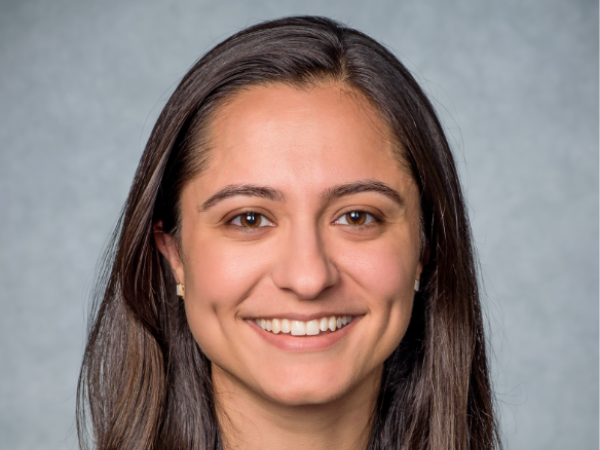 Research at UAB Heersink School of Medicine enhances future physicians' understanding of evidence-based medicine and critical thinking. Hands-on experiences prepare students to apply scientific discoveries to clinical practice, bridging the gap between research and patient care. Gelare Ghajar-Rahimi, a student in the MD/PhD program, exemplifies the commitment to research and mentorship emphasized by Heersink School of Medicine.
Research at UAB Heersink School of Medicine enhances future physicians' understanding of evidence-based medicine and critical thinking. Hands-on experiences prepare students to apply scientific discoveries to clinical practice, bridging the gap between research and patient care. Gelare Ghajar-Rahimi, a student in the MD/PhD program, exemplifies the commitment to research and mentorship emphasized by Heersink School of Medicine.
Ghajar-Rahimi joined the Heersink School of Medicine in 2018, entering the Medical Scientist Training Program (MSTP) with a strong research background and a deep curiosity about the immune system. Now at the beginning of her fourth year of medical school and in her seventh year in the MD/PhD program, her goal has remained consistent: to explore the biological mechanisms behind disease and healing.
In 2024, Ghajar-Rahimi successfully defended her Ph.D. in Immunology under the mentorship of Anupam Agarwal, M.D., senior vice president for Medicine and Dean for the UAB Heersink School of Medicine, and James F. George, Ph.D., professor of surgery in the Division of Cardiothoracic Surgery. Her dissertation focused on how the lymphatic system responds to kidney injury, a study that earned her publication in the American Journal of Physiology-Renal Physiology (AJP) and an invitation to speak at UAB’s Spatial Day Symposium.
“The main conclusion of my dissertation work, detailed in the AJP paper, was that three distinct phases of kidney lymphatic responses occur following acute ischemic injury,” Ghajar-Rahimi explains. “These phases include early lymphangiogenesis, a regression to a baseline phenotype, and later-stage remodeling tied to inflammation and tissue repair.” Her findings revealed previously underappreciated diversity in lymphatic endothelial cell behavior, suggesting that different subpopulations may play unique roles throughout injury and recovery.
This work, however, faced some challenges. Lymphatic endothelial cells are scarce and fragile, making them difficult to study directly. To overcome this, Ghajar-Rahimi leveraged single-cell transcriptomic data from the Kidney Precision Medicine Project to identify and analyze these rare cells.
Imaging added another layer of complexity. The optimal conditions for visualizing lymphatic structures often interfered with detecting immune cell markers. To address this, Ghajar-Rahimi employed the COMET platform—a cutting-edge imaging system that uses iterative cycles of staining and imaging to capture high-resolution views of cellular markers within a single tissue section. By targeting two markers at a time and overlaying the images, COMET enables the visualization of up to 40 different targets simultaneously. This technique revealed significant heterogeneity in lymphatic marker expression, underscoring the need for more detailed analyses moving forward.
Currently, Ghajar-Rahimi is applying the skills she honed during her Ph.D. to dermatologic immunology. Working alongside Nabiha Yusuf, Ph.D., M.S.P.H., professor in the Department of Dermatology, she is investigating how ultraviolet B (UVB) radiation affects the skin’s immune environment, particularly focusing on a newly identified subset of dendritic cells that may suppress the immune response.
This research leverages multiplex immunofluorescence powered by the COMET system to explore how UVB-induced dendritic cells contribute to immune suppression. UV exposure is well known to increase skin cancer risk, but its immunosuppressive effects could also offer therapeutic benefits for chronic inflammatory skin conditions such as psoriasis and atopic dermatitis. Ghajar-Rahimi aims to understand this dual nature of UV radiation to develop more effective, targeted treatments for dermatologic conditions.
This project, based on findings currently under review for publication, uses COMET imaging to analyze the spatial relationships and phenotypes of immune cells in the skin with unprecedented detail. The stems from foundational studies conducted in Dr. Yusuf’s lab. Ghajar-Rahimi, a co-author on the study, recently published a review in Cells which examined the role of UV radiation-induced dendritic cells in the skin, highlighting key unresolved questions in the field and underscoring the broader relevance of the work. Additionally, the team's work is supported through a competitive internal grant, as they were awarded one of only four recent COMET vouchers from the UAB Immunology Institute to advance their research.
Throughout her training, Ghajar-Rahimi has benefited from strong mentorship and cross-disciplinary collaboration. She credits Agarwal and George for encouraging bold scientific questions and creative problem-solving, and she has found similar support in her clinical research work with Yusuf.
“From our first meeting, Dr. Yusuf was both encouraging and supportive,” Ghajar-Rahimi says. “She not only showed excitement about my ideas and the involvement I wanted to have, but together we were able to craft feasible plans that took into account my clinical schedule and responsibilities.”
Now in the clinical phase of her training, Ghajar-Rahimi is focused on a future in academic dermatology, where she hopes to bridge the gap between research and patient care. Her goal is to continue exploring the molecular and cellular mechanisms of skin disease while treating patients, contributing to the development of precise, targeted therapies for complex dermatologic conditions.
For Ghajar-Rahimi, the connection between research and medicine is essential. “Patients constantly remind us of the urgent need for scientific progress,” she says. “Advancing medical care through novel therapies often requires a profound understanding of the underlying mechanisms at play.”
With a strong foundation in immunology, expertise in advanced imaging, and a deepening clinical perspective, Ghajar-Rahimi is poised to make meaningful contributions to both science and medicine—illuminating what lies beneath the surface, in more ways than one.